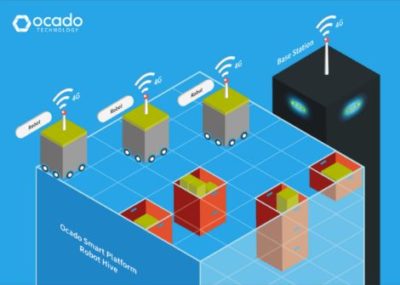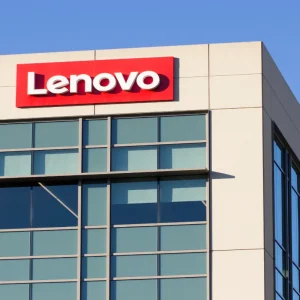
Ocado, the online food retailer, has announced its plan to develop a 4G-based wireless protocol used to control the robots powering its new warehouses.
The company found that its new warehouse solution delivered some interesting technical challenges, with one being how to communicate with over 10,000 robots concurrently.
Its highly automated warehouses are to be offered as part of a manged service named ‘Ocado Smart Platform’, enabling international partners to build scalable, sustainable and profitable online retail businesses.
The protocol marks the first deployment from around the world to use the unlicensed 4G spectrum for warehouse automation.
 Initially starting with WiFi, Ocado identified that following the need to communicate with swarms of thousands of robots at a rate of talking to each individually ten times a second with guaranteed latency; it was noticeable that the approach would require complex planning and installation work for each warehouse.
Initially starting with WiFi, Ocado identified that following the need to communicate with swarms of thousands of robots at a rate of talking to each individually ten times a second with guaranteed latency; it was noticeable that the approach would require complex planning and installation work for each warehouse.
In an interview with ITP.net, Adam Green, Wireless team leader, Ocado said: “While building a robot can be a relatively straightforward task, creating a swarm of thousands of robots and making sure you can communicate with every single in a tenth of a second is a whole different ball game.”
 The solution was chosen from a selection of many ideas. Cambridge Consultants happened to be the chosen partnership as they offered a fresh perspective with their world class RF (radio frequency) and DSP (digital signal processing) skills.
The solution was chosen from a selection of many ideas. Cambridge Consultants happened to be the chosen partnership as they offered a fresh perspective with their world class RF (radio frequency) and DSP (digital signal processing) skills.
Based on this, the company came up with a system which takes advantage of modern wireless communication principles, with added secret ingredients that helps tailor it to its specific environment.
Green added in a blog post: “The partnership has proven to be very successful because we have produced a fully featured prototype within two years (it usually takes three to five).
“In addition (and maybe quite surprisingly to some), the initial system architecture we defined at the very start of the project remains unchanged.”
Here’s how the IoT is developing the online food delivery industry.






